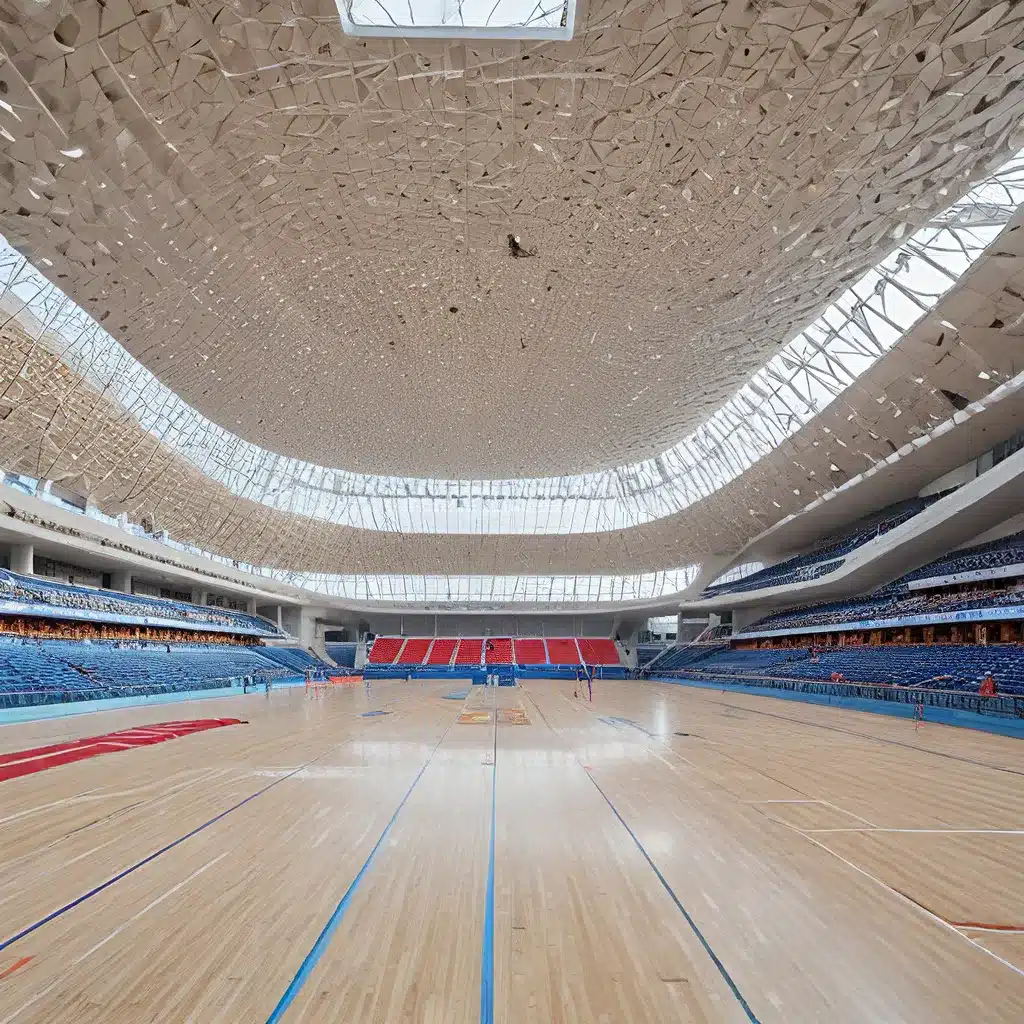
Nanjing: A Vibrant City Steeped in History
Located along the banks of the Yangtze River, Nanjing is a city in eastern China that boasts a rich cultural heritage and a rapidly evolving skyline. As the capital of Jiangsu Province, Nanjing has long been a center of political, economic, and academic importance, serving as the seat of power for several ancient Chinese dynasties.
Nestled within this historic landscape, the Nanjing Youth Olympic Games Gymnasium stands as a testament to the city’s forward-thinking approach to modern architecture and urban development. Constructed as the main venue for the 2014 Youth Olympic Games, this striking structure has captured the attention of architects, sports enthusiasts, and casual observers alike.
A Fusion of Tradition and Innovation
The Nanjing Youth Olympic Games Gymnasium was designed by the acclaimed Chinese architectural firm AEDAS, led by principal architects Paul Noritaka Tange and Johnny Hsukvery. Their vision was to create a dynamic and technologically advanced sports facility that would seamlessly blend traditional Chinese elements with contemporary design.
One of the most remarkable features of the gymnasium is its roof design, which takes inspiration from the iconic Chinese umbrellas. The sweeping, curved roof is composed of a series of radial steel trusses that support a translucent membrane, allowing natural light to flood the interior spaces. This innovative design not only enhances the building’s visual appeal but also contributes to its energy efficiency by reducing the need for artificial lighting.
The official report from the 2014 Nanjing Youth Olympic Games highlights the architects’ commitment to sustainable design principles, noting that the gymnasium’s energy-efficient features and use of renewable materials have set a new standard for sports facilities in China.
A Striking Architectural Landmark
The Nanjing Youth Olympic Games Gymnasium’s sleek and futuristic appearance has made it a prominent landmark within the city’s skyline. The building’s curved facade, which is clad in a combination of glass and metal panels, creates a dynamic and ever-changing visual experience for visitors and passersby.
The main entrance to the gymnasium is particularly striking, featuring a dramatic cantilevered structure that extends outwards, drawing visitors into the building’s vibrant interior spaces. The lobby is characterized by soaring ceilings, natural lighting, and high-quality finishes, creating a welcoming and inviting atmosphere for athletes, spectators, and event organizers.
Nanjing has a long history of hosting major sporting events, from the 1936 National Games to the recent 2014 Youth Olympic Games. The Nanjing Youth Olympic Games Gymnasium was designed to accommodate a wide range of athletic disciplines, including basketball, volleyball, badminton, and table tennis. The facility’s versatile and high-performance design has made it a popular venue for both international competitions and local community events.
Integrating with the Surrounding Environment
The Nanjing Youth Olympic Games Gymnasium is not just a standalone architectural masterpiece; it is seamlessly integrated with the broader urban landscape of Nanjing. The building’s thoughtful site planning and landscaping create a seamless transition between the indoor and outdoor spaces, enhancing the overall user experience for visitors.
Surrounding the gymnasium, there are lush green spaces, pedestrian pathways, and public plazas that encourage active recreation and social interaction. These well-designed outdoor areas not only complement the building’s aesthetic but also contribute to the overall livability of the surrounding neighborhood.
Moreover, the gymnasium’s strategic location near public transportation hubs and major roads ensures easy accessibility for both local residents and visitors, making it a truly integrated part of Nanjing’s urban fabric.
A Legacy of Sustainable Innovation
The Nanjing Youth Olympic Games Gymnasium’s commitment to sustainability and energy efficiency is not just a passing trend, but a core principle that has been woven into the building’s design and operations.
The gymnasium’s rooftop solar panels and advanced building management systems have significantly reduced its energy consumption and carbon footprint, setting a new standard for eco-friendly sports facilities in China. The building’s water-efficient features, such as rainwater harvesting and greywater recycling, further contribute to its environmental sustainability.
Old Stadium Journey highlights the Nanjing Youth Olympic Games Gymnasium as a prime example of how modern architecture can seamlessly integrate with environmental stewardship, creating a truly holistic and sustainable sports and entertainment hub.
Inspiring Future Generations
Beyond its architectural and technological achievements, the Nanjing Youth Olympic Games Gymnasium has also become a symbol of inspiration for young athletes and aspiring designers alike.
The gymnasium’s innovative design and state-of-the-art facilities have captivated the imaginations of youth from around the world who participated in the 2014 Youth Olympic Games. The energy and enthusiasm of these young competitors have left a lasting legacy, inspiring future generations to pursue their athletic and creative passions.
For architecture students and design professionals, the Nanjing Youth Olympic Games Gymnasium serves as a shining example of how traditional Chinese aesthetics can be reinterpreted through a contemporary lens, pushing the boundaries of what is possible in the realm of sustainable and innovative sports facility design.
Conclusion: A Triumph of Architectural Excellence
The Nanjing Youth Olympic Games Gymnasium is a true triumph of architectural excellence, seamlessly blending tradition and innovation to create a dynamic and environmentally responsible sports and entertainment hub. Its striking and technologically advanced design, coupled with its thoughtful integration into the broader urban landscape, have earned it a prominent place in the annals of modern Chinese architecture.
As Nanjing continues to evolve and grow, the Nanjing Youth Olympic Games Gymnasium will undoubtedly remain a beloved landmark, inspiring future generations of athletes, designers, and urban planners to push the boundaries of what is possible in the realms of sports, sustainability, and architectural excellence.

